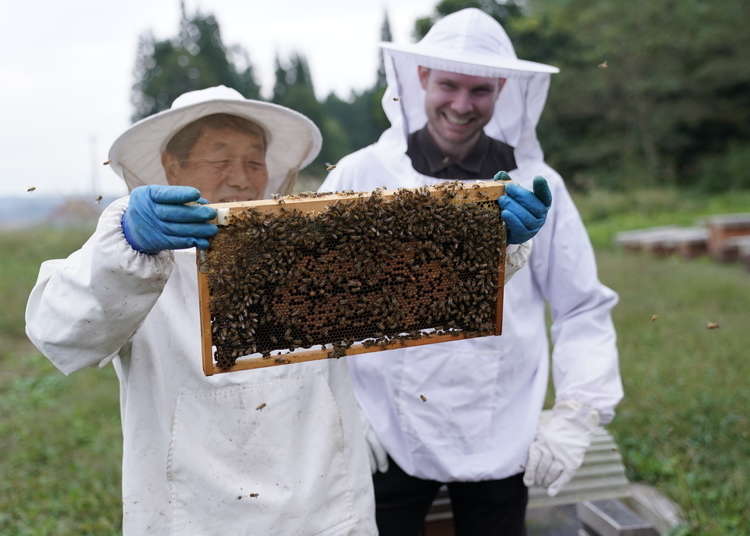
The rural town of Shinano in Nagano Prefecture is a one-hour drive from Nagano Station and offers several accommodation options. The area receives over two meters of snow in the winter, and there are several ski lodges that cater to winter sports enthusiasts, including at Mt. Myoko and Shinanofuji. The nearby lake, meanwhile, is home to lodges, guest houses, and rental homes. However, to truly get a sense of the region's rich agricultural heritage, consider staying in a traditional farmhouse, a practice known as nohaku, or "farm-stay" in English.
Not your average holiday accommodation
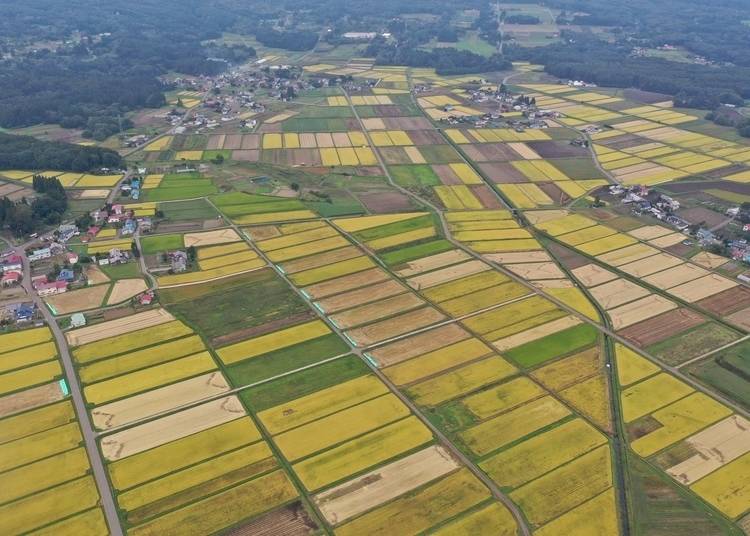
Staying on a farm is a perfect option for adventurous travelers and outdoor-oriented families. The format goes beyond a simple hotel or bed and breakfast accommodation. While there, you're encouraged to participate in your host family's daily life, whether that be picking vegetables, feeding the chickens, or even tending to honeybees. Think of it as a "destination vacation," in which the accommodation itself is the tourist experience.
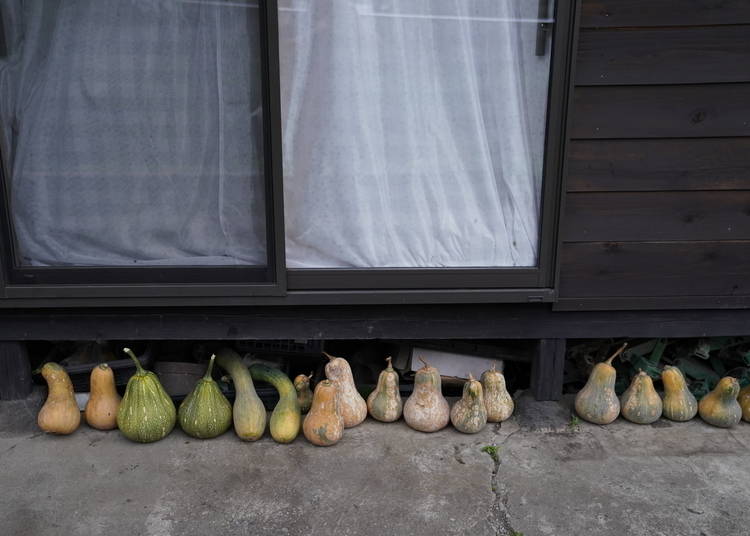
Staying on a farm can be incredibly rewarding, though it may not suit all tastes. Travelers looking to simply relax and enjoy their own time may prefer a more luxurious accommodation at a nearby onsen hot spring or ski resort. But those ready to learn, communicate, and have an experience that goes beyond the typical routines of their daily life will have a wonderful time, and return home with fresh insights and outlooks on Japanese culture and customs.
Introducing Gonbo no Ie, a traditional Shinano farmstead
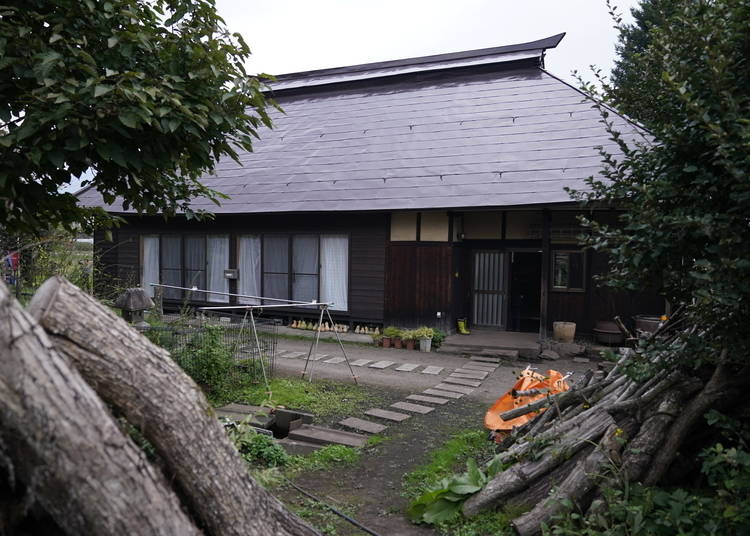
Gonbo no Ie sits in the middle of Shinano's main valley surrounded by rice paddies, and fields of buckwheat and corn. This traditional Japanese farmhouse resembles something out of a fairytale or fantasy novel. Not only does the structure itself feel lifted from a different world, the surrounding vegetable garden, chicken coop, and stacks of firewood add a pastoral charm that harks back to simpler times.

This is the residence of Keizou and Chisato Kurata. After a fruitful life in Tokyo, Keizou retired and started anew in Nagano with his wife. While many retirees settle on more leisurely routes, the Kuratas embraced the region's labor-intensive lifestyle. First, they retrofitted the house, preserving its traditional architectural style, with an earthen genkan entryway, and a historically accurate irori stove inside.
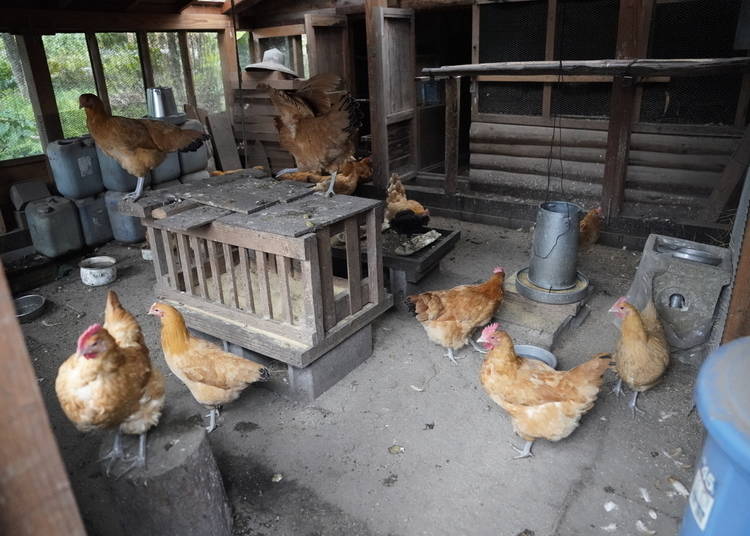
Outside, they began planting carrots, eggplant, and peppers. Adjacent to the fields, Keizou built his own chicken coop, which is now home to some two dozen hens.
Getting one's hands dirty (for a good cause)
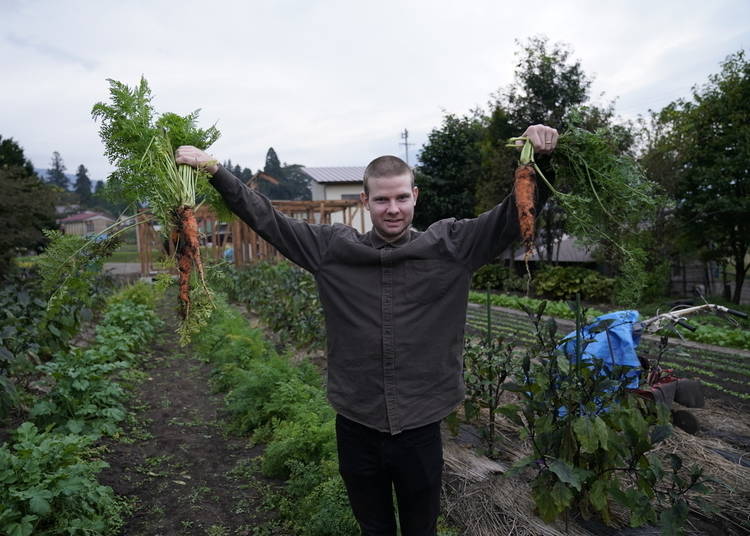
Throughout your stay, you'll enjoy a feast of food incorporating all the family's produce. Upon arrival, the hospitable Chisato prepares a tasty snack of yogurt and honey. Guests are encouraged to grab a pair of clippers and begin selecting vegetables from the ripe assortment of eggplants and carrots. You can also gather eggs from the chicken coop.
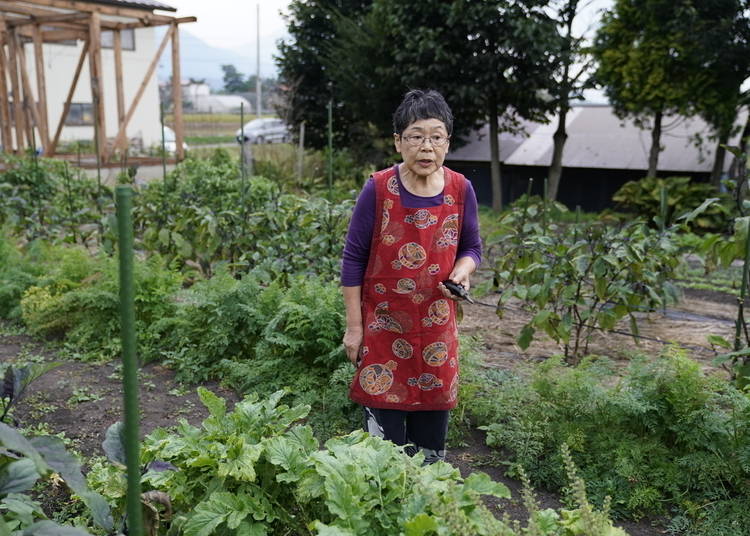
The fresh honey sparks a conversation about Keizou's whimsical venture into beekeeping. He recalls how a program on television about beekeeping motivated him to try the practice out himself. Around 10 years later, he has a thriving local side-business selling jars of honey to a network of friends, relatives, and loyal customers.
Gathering honey (with a sting in the tail)
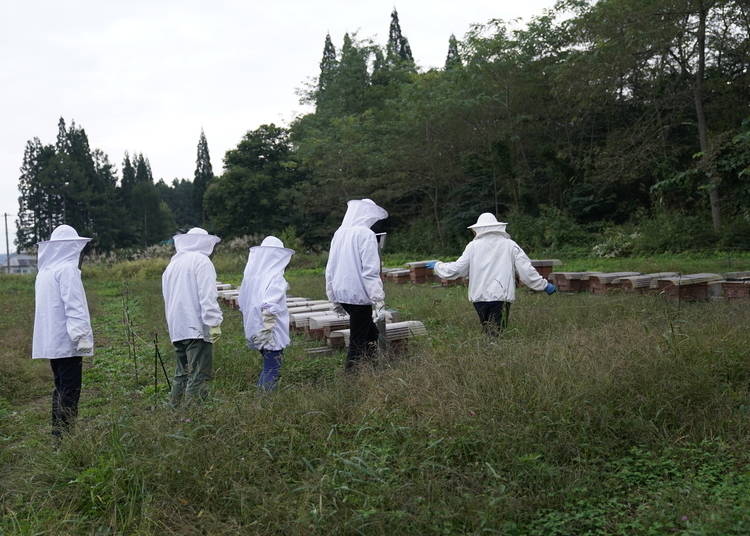
With only an hour or so of daylight left, Keizou rushes off to a nearby plot of land where he keeps his bees—guests are welcome to go along, too. The honey-making insects don't like interacting with people once the sun goes down, he explains. To stop bears from intruding into his farm, Keizou built an electric fence around the perimeter. After turning it off, he steps inside, taking care not to bump any of the hives.
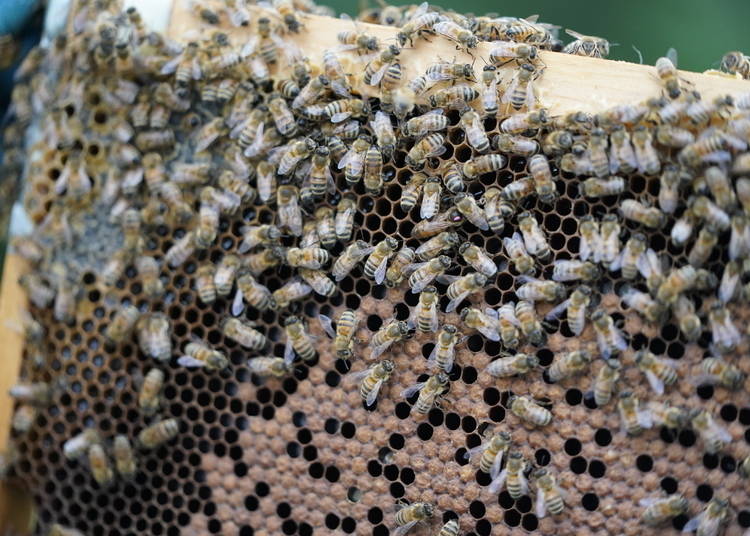
Arriving at one particular hive, Keizou bends over to show off what's inside. Each box comprises multiple wooden frames fixed around a metal screen. While many beekeepers use smoke to stun the bees before handling, Keizou seems to prefer an all-natural approach. As he lifts the screen, the foreboding sound of several hundred buzzing bees erupts.
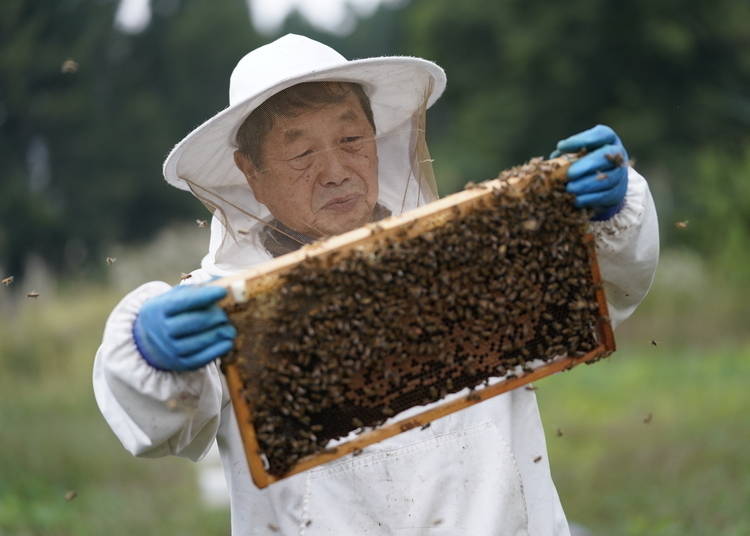
The bees seem to lose their patience at dusk, just as Keizou had warned. Despite wearing protective clothing, the hostile behavior of the bees makes it difficult to maintain one's composure. Keizou, however, brazenly handles the screen (at one point stoically informing his guests in real-time that he is being stung).
Enjoying the fruits of a hard day's labor
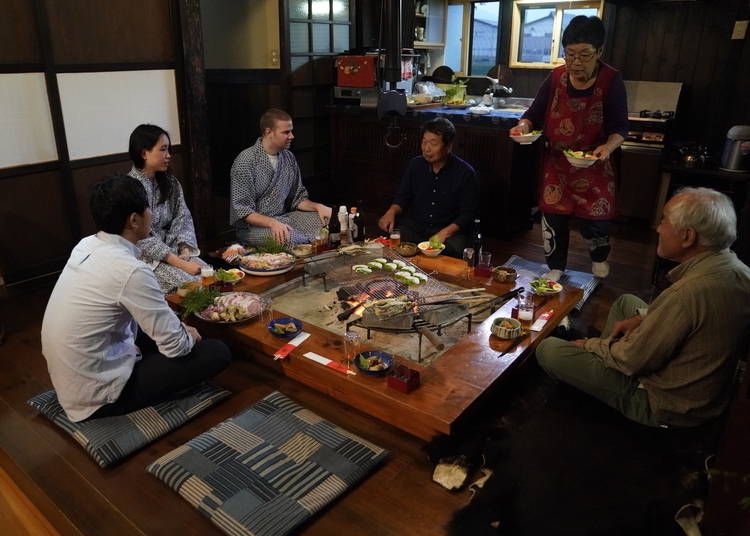
Chisato puts the finishing touches to a plethora of colorful dishes that take advantage of the family's traditional irori stove. A generous amount of charcoal sits at the base of the hearth, covered by a large metal screen that stretches the one meter or so across a stone-and-wood perimeter. Salted fish on skewers cook slowly over the stove, absorbing the savory smoke to create a truly traditional delicacy. With the charcoals raging hot, it's time to start grilling.
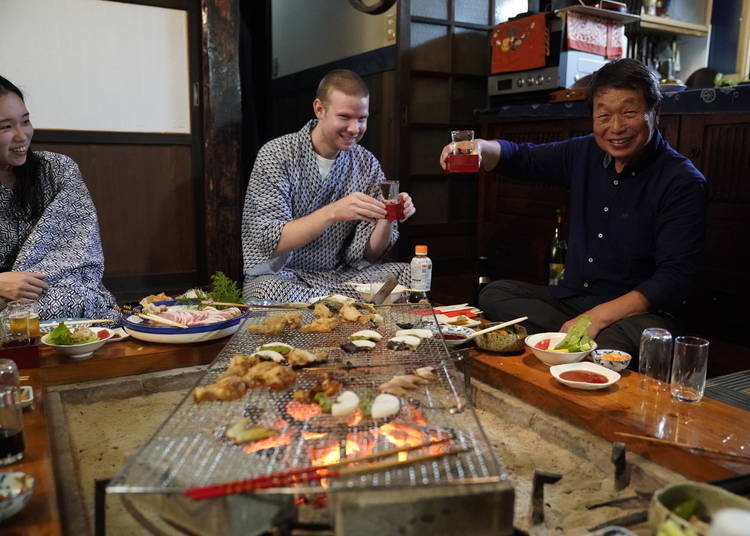
Dinner spans a range of foods, including vegetables gathered from the fields just hours earlier (the meal menus change depending on the day). Fully embracing the traditional Japanese sense of hospitality known as omotenashi, Chisato has, on this occasion, prepared beautiful trays of sashimi—even splurging on premium cuts such as chu-toro (medium-fatty tuna).

Over the next two hours or so, the Kuratas treat the group to stories of their past life in Tokyo, the challenges they faced upon moving to Nagano, the joy they derive from their children and grandchildren's visits, and more. This is, of course, accompanied by hefty glassfuls of Japanese sake, which Keizou takes visible delight in sharing. As the charcoal slowly begins to burn away and the sake runs out, so too does everyone's energy. It's time for bed.
Bed and breakfast—rural style
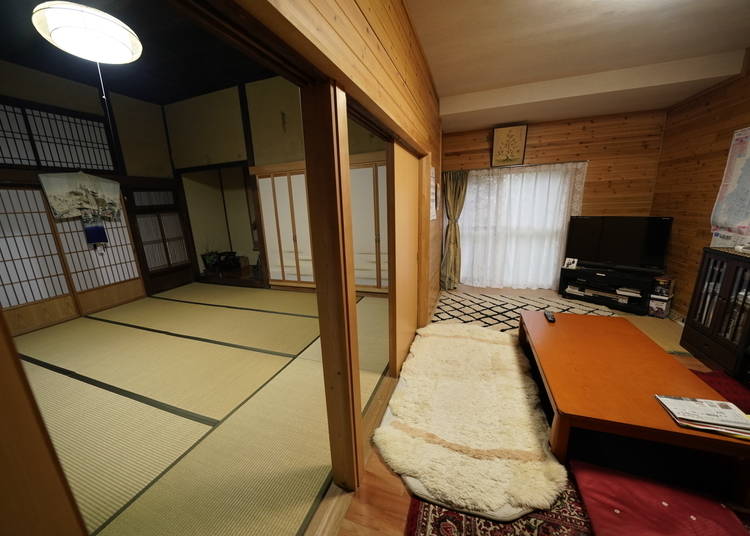
Guests sleep on futons in a single, spacious tatami-mat room. The tatami room sits adjacent to a living room with a television and kotatsu—a traditional sunken table heated from underneath. The single room can accommodate anywhere from one to five guests. Down the hall are a bath and modern toilet.
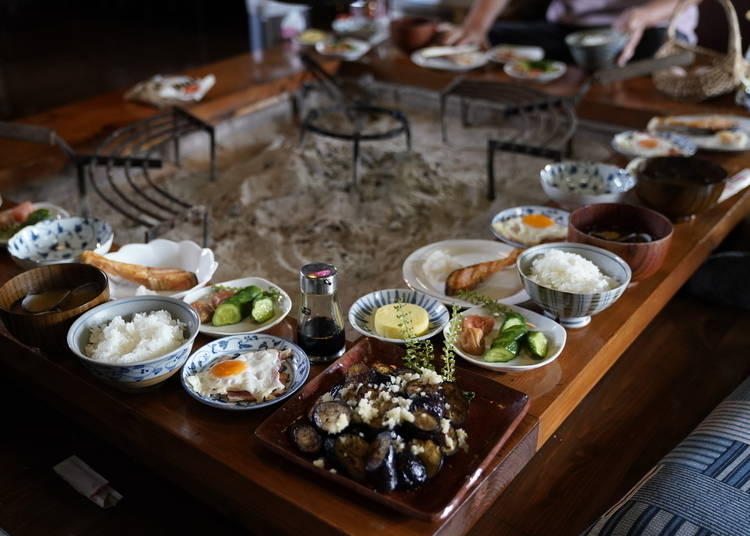
In the morning, Chisato prepares a breakfast to rival the feast from the night before. Today, the meal spans a spread of bacon, eggs, salmon, seasoned eggplants, miso soup with clams, rice, fresh tomato, and black garlic with honey. It's hard to think of a better way to start the day.
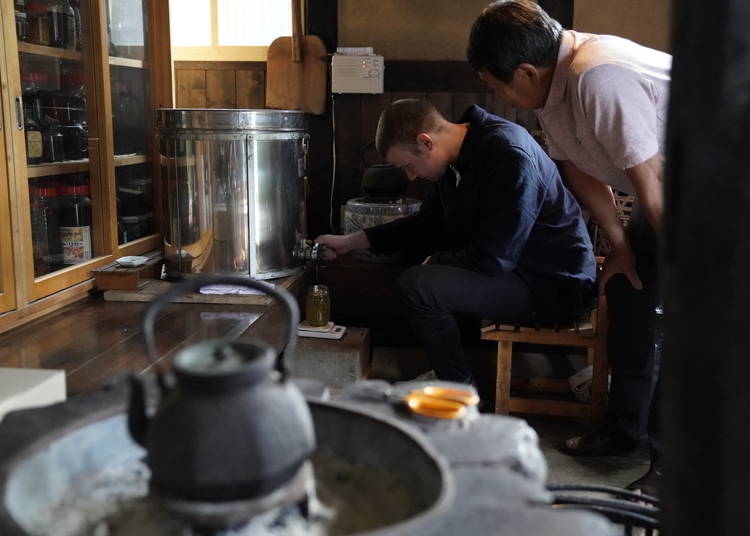
Keizou sells jars of his honey. Purchasing directly from the source means you can get a sizable portion for a very low price. It makes a great souvenir prior to your departure.
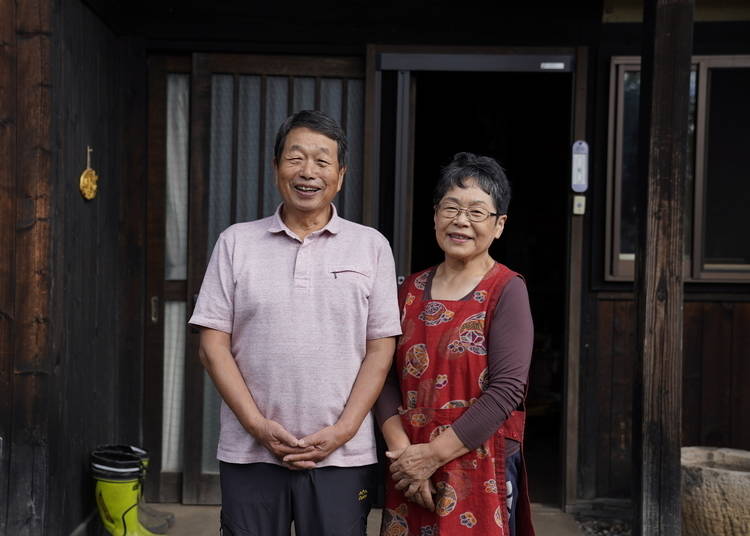
Despite the short stay, the intimacy of the accommodation and the hands-on activities make the holiday feel much longer. The Kuratas' warm hospitality gives guests a truly unforgettable experience.
Other farm-stay accommodations and experiences are available. Please contact Farmstay Shinano for further details.
-
Association of Farmstay Shinano一般社団法人 Farmstayしなの
- Address Tomino 4152-1, Shinano-cho, Kamiminochi-gun, Nagano
- Phone Number 026-217-8040
Activity: Farmstay program
Activity address: Varies depending on farmstay facility
Price per person: Half-board costs either 10,000 yen or 15,000 yen (tax included), depending on the course
Closed: Irregularly
Languages available: Japanese/Basic English
Email: info@farm-stay.jp
- Area
- Category
*Prices and options mentioned are subject to change.
*Unless stated otherwise, all prices include tax.
Popular Tours & Activitiess
-

How to Get Don Quijote's Exclusive 2025-2026 Winter Gift (+Tax-Free Savings)
-
Ad

Complete Guide to Ueno’s National Museum of Nature and Science, the Perfect Place to Visit on Rainy Days or With Children
-

Strawberries, Style, and Tokyo’s Coolest Neighborhood: Winter Afternoon Tea in Kichijoji
by: Guest Contributor
-

Japan’s Shinkansen Is About to Change Travel in an Unexpected Way
by: Guest Contributor
-
Ad

Preserving the Beauty of World Heritage Site Shirakawa-go for the Future Through Responsible Travel
-

First Japan Cherry Blossom 2026 Forecast Announced! Here's When & Where to See Sakura in Japan
Inspiration for Accommodations
-

Enjoy Mt. Fuji from the Comfort of Your Room! Recommended Ryokan with Mt. Fuji View
-

Stay Near the Cherry Blossoms! Hotels for Cherry Blossom Viewing in Tokyo
-

Family-Friendly Hotels with Free Shuttle to Disneyland: Convenient Access for a Magical Stay
-

Top Ranked Hakone Hotels with Mt. Fuji View: Enjoy Stunning Scenery from Your Private Space
-

Convenient Tokyo Hotels with Airport Shuttle: Ideal for Families and Heavy Luggage
-

Stunning Tokyo Tower View Hotels: Enjoy Spectacular Scenery from Your Private Space
-

Convenient Asakusa Hotels with Kitchens: Ideal for Extended Family Visits
-

Experience Luxury: Hakone's 10 Best Five-Star Accommodations
-

Enjoy Mt. Fuji Autumn Leaves! Top Hotels Near the Popular Autumn Leaves Corridor
-

Experience Hakone Fall Foliage from Your Room with Stunning Views
-

Essential Tokyo: The Complete Guide to Ikebukuro Station
-

When Do Hotel Cancellation Fees Apply? What You Need to Know For Situations Like Typhoons, Earthquakes or Illness
by: Kaori Kimura
-

Spending Wonderful Time Alone in Shibuya - Free Cosmetics and a Hundred-Yen Bus!
-

Kichijoji – Explore Tokyo’s Top-Rated Stylish Suburb in Half a Day!
-

6 Surprisingly Cheap Things in Japan
-

Tokyo Tsukiji|Tsukiji Area Map & Sightseeing Information
- #best ramen tokyo
- #what to buy in ameyoko
- #what to bring to japan
- #new years in tokyo
- #best izakaya shinjuku
- #things to do tokyo
- #japanese nail trends
- #what to do in odaiba
- #onsen tattoo friendly tokyo
- #daiso
- #best sushi ginza
- #japanese convenience store snacks
- #best yakiniku shibuya
- #japanese fashion culture
- #best japanese soft drinks



















